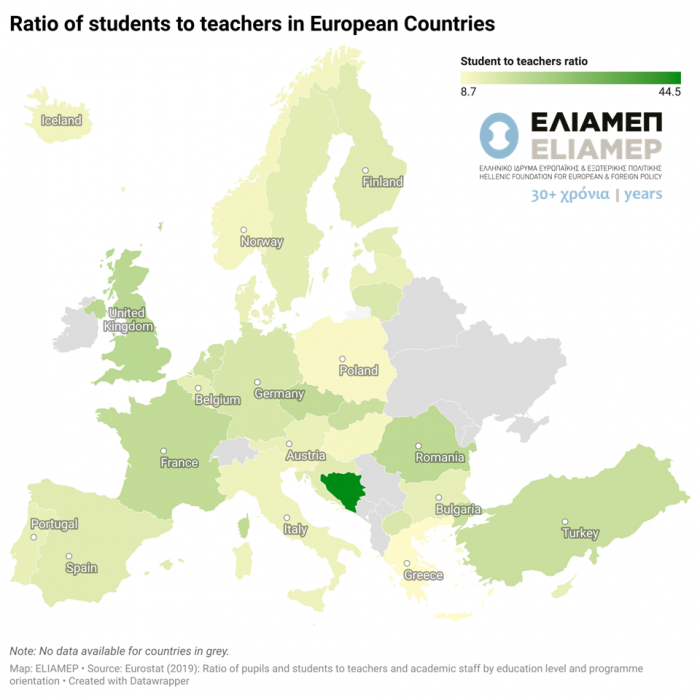As Europe gradually emerges from the pandemic, students are expected to return to classrooms, after a prolonged period where training was taking place in part, or entirely, online. On this occasion, it is interesting to review a quantitative indicator of the quality of education provided, that of the ratio of students to teachers. In order to see how European countries are classified, in terms of this dimension, we drew on the latest available Eurostat data for primary school students and teachers. These are shown on the map above.
The average value for the index for the European Union (EU) is estimated at 13.5 pupils per teacher. With the exception of Bosnia and Herzegovina, which is far from the EU average and its education system seems to be facing substantial staff shortages, the remaining countries are below the threshold of 20 pupils per teacher. More specifically, the countries with the most pupils per teacher in the EU are Bosnia and Herzegovina (44.5 pupils), followed by the United Kingdom (19.9 pupils) and Romania (19.4 pupils). In France there are 18.8 students per teacher, in Germany 15.1, and in Spain 13.6. On the other hand, the countries with the lowest proportion of students to teachers, are Greece, with only 8.7 students per teacher, Luxembourg (9 students) and Poland (9.6).
However, some caution is needed in the interpretation of these results, as the index is estimated using the total, national cumulative number of students and teachers, without taking into account the regional specificities of each country. For example, in Greece, the large number of sparsely populated areas such as islands and mountainous areas create the need for more teachers for a small number of students. On the contrary, in large urban centers, large number of students are often crowded in one class. It would therefore be interesting to look at this index at the municipality level in each country.




